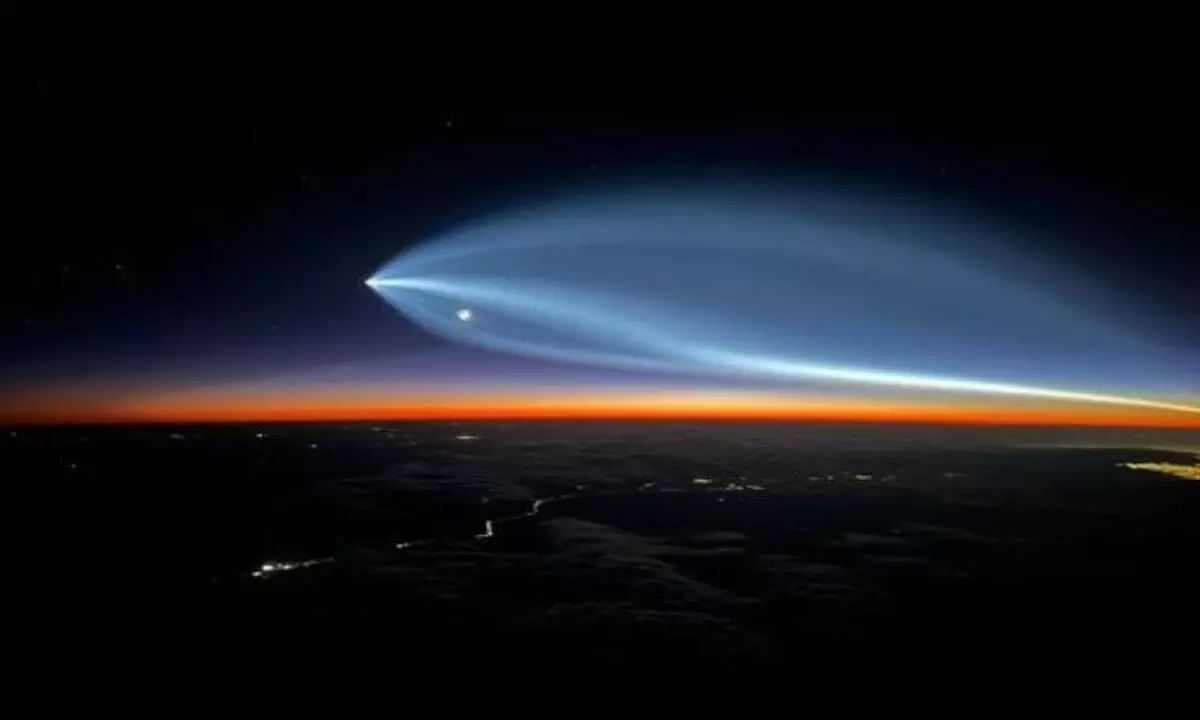Falcon 9 punches a hole in the ionosphere
Baumgardner studied pictures of the sky over Arizona, after the launch, which showed a faint red glow in the wake of the rocket
image for illustrative purpose

New York A Falcon 9 rocket launched by Elon Musk’s SpaceX earlier this month has made a temporary hole in Earth’s ionosphere, American space physicist Jeff Baumgardner has claimed.
Falcon 9, a reusable two-stage rocket designed for safe and reliable transportation of payloads and people into Earth’s orbit and beyond, was launched from the Vandenberg Space Force Base in California on July 19.
Baumgardner studied pictures of the sky over Arizona, after the launch, which showed a faint red glow in the wake of the rocket, which according to him confirms the rocket punched a hole in the ionosphere.
"This is a well studied phenomenon when rockets are burning their engines 200 to 300 km above Earth's surface," Baumgardner was quoted as saying to spaceweather.com.
"I reviewed footage from the July 19th launch. It shows the second stage engine burning at 286 km near the F-region peak for that time of day. So, it is quite possible that an ionospheric 'hole' was made," he added.
NASA defines the ionosphere as the layer of the atmosphere where space begins, filled with charged particles called ions. It spans between roughly 50 to 400 miles above the surface.
Ionosphere is is the ionised part of the upper atmosphere of Earth, and also the reason that geomagnetic storms cause auroras, with solar plasma reacting with the ions to create the spectacular colours seen in the sky.

